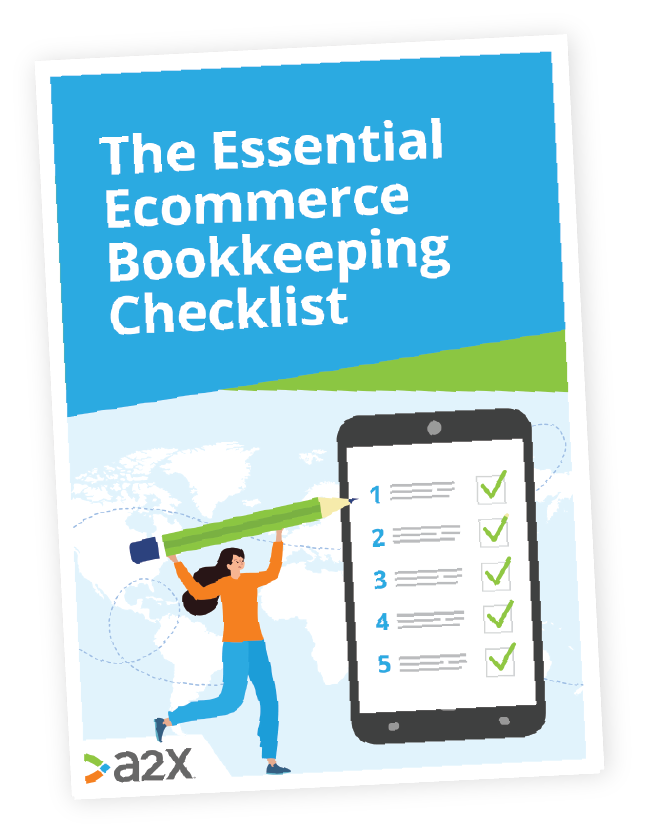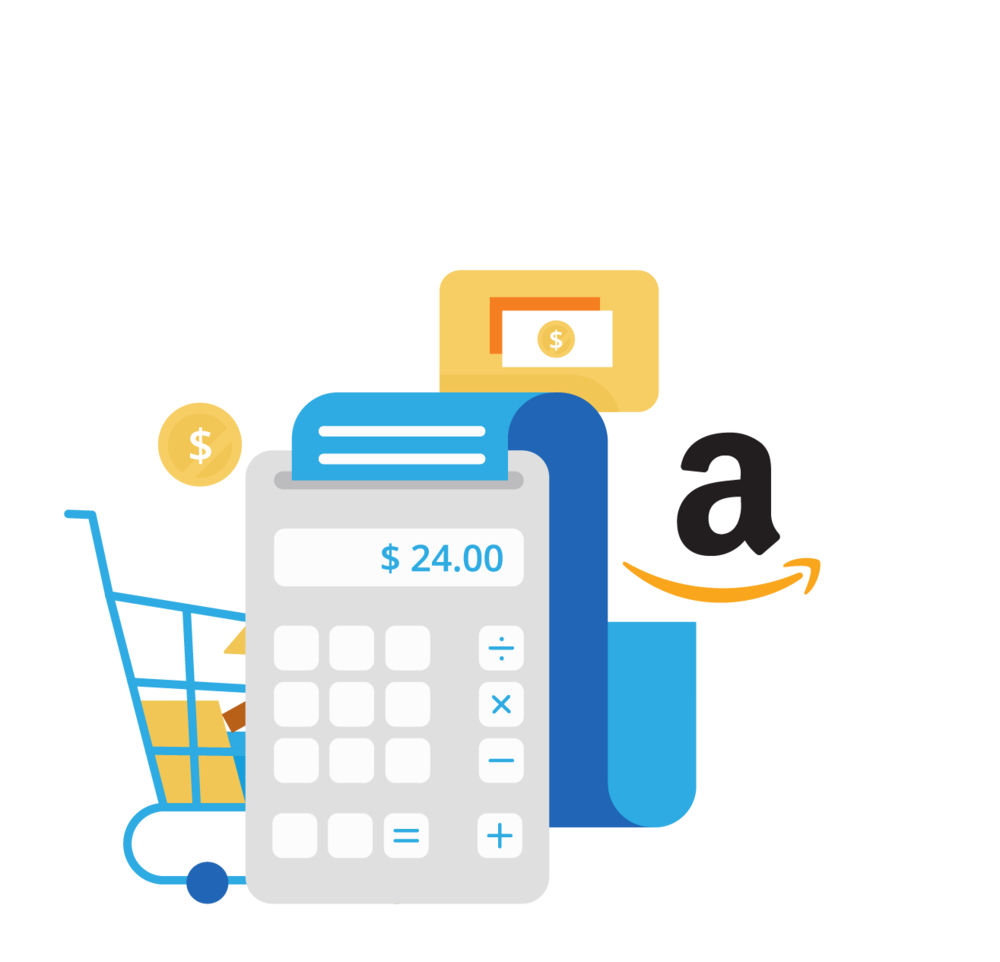Profit First for Ecommerce Sellers
Accountants might be comfortable with P&Ls and balance sheets, but not all ecommerce sellers are.
When it comes to a quick reference point on the health of their business, sellers often look at their bank accounts.
With bank transactions being almost instant nowadays, nowhere else offers them the same real-time viewpoint as those balances. Simple, quick, and easy.
But as we know, simple, quick and easy can often lead to poor quality.
Profit First is a concept that allows you to mold your accounts so that you can use your bank balances as your business financial dashboard, but in a way that’s more conducive to success.
We sat down with A2X partner, bookskeep founder and all-round ecommerce accounting expert Cyndi Thomason to talk about all things Profit First, and why ecommerce sellers everywhere should be using it.
Cyndi is the author of Profit First for Ecommerce Sellers. In her transformational book, she teaches readers how to apply Profit First for predictability and success.
In this article, part of our ecommerce fundamentals series and the A2X accounting hub:
Table of Contents
Want to feel completely confident in your ecommerce bookkeeping?
Businesses that document their processes grow faster and make more profit. Download our free checklist to get all of the essential ecommerce bookkeeping processes you need every week, month, quarter, and year.
Download it here
What is Profit First for Ecommerce Sellers?
The idea behind Profit First is to encourage sellers to manage their finances in a way that is both within their comfort zone, but more efficient and productive long-term.
Profit First is underpinned by the principle of Parkinson’s Law.
“This law says that, no matter how much money people earn, they tend to spend the entire amount and a little bit more besides,” Cyndi says. “Their expenses rise in lockstep with their earnings.”
You know that excitement you get when you see your bank account growing and you suddenly get the itch to spend more than you might normally? That’s Parkinson’s Law.
The more you have of something, the more you use it up. The less you have, the more you conserve.
Business owners that use a single bank account for all their transactions, and rely on that same account to tell them whether their business is healthy at any given moment, fall prey to this law.
Cyndi explains where problems can come from when all your money is stored in one place:
“Cash flow around inventory has a very different pattern to monthly operating cash flow… [so] those two things being mixed together causes some mixed signals.”
Profit First addresses this problem and separates money based on its allocated use. As funds come in, they are divided into pots with a specific purpose.
Finances become very intentional and business owners see how their business is truly performing against a variety of metrics, not one lump sum.
What Are the Benefits of Using Profit First for Ecommerce Sellers?
Profit First allows sellers to use their accounts for a quick reference without misconstruing the health of their business.
As soon as they get paid, they organize their money based on the logical next steps for growth. If they want to increase inventory by 10%, for example, then that percentage extra should go into a pot for buying inventory.
That way, even if a seller doesn’t need to buy for a while, that money isn’t lost in unexpected or unaccounted for expenses.
Additionally, if sellers are hit by unexpected turbulence, they have a more solid system in place.
“[at the beginning of the COVID-19 pandemic] I was getting calls and emails from people either saying ‘I’m so glad I have Profit First because I have savings, I know we’re going to be fine, thank you for getting us to this place,’ or, ‘oh my, I don’t know what to do, shall I cancel my accounts?’ People were panicking.”
Cyndi recollects her experience in early 2020 helping her clients weather the pandemic storm. She recounts that those who were able to put the Profit First method in place, quickly saw a return.
“Things took off like crazy… businesses with Profit First were able to weather the uncertainty and then take advantage of the boom that came after.”
An incredibly simple solution to a potentially fatal problem, ecommerce sellers can initiate the Profit First concepts for free.
It’s a no-brainer.
The benefits of Profit First
- It’s an easy solution for ecommerce sellers with minimal accounting knowledge, to stay in control of their financials.
- It provides a more organized, reliable real-time view of your business financials.
- You can set up automatic allocations and adjust where needed.
- It’s a quicker way to get a feel for the patterns of your business financials, and adjust expenses accordingly.
- You have a better handle over your cash flow for each type of expense, as it’s unique to each element of your business.
- It is a good way to keep track of how much you can safely withdraw - as the business owner, you should get a share of the profits too!
Cyndi does warn, however, that sellers should start small and try not to get carried away with separating into too many different accounts.
How Does Profit First Work?
The setup
In her blog, Cyndi outlines the four key steps to setting up Profit First and always recommends the “beach entry method”.
This means easing your way in and not jumping off the deep end, starting with at least three accounts in the beginning.
1. Set up multiple bank accounts.
Cyndi typically starts her clients off with one for inventory, one for operating expenses and one for saving profits, as a minimum.
Tip: Have a clearing account where all income arrives, before transferring these funds to your allocation accounts.
2. Pick your percentages
Decide what percentage you are going to allocate to each account and move funds accordingly. It might feel clunky at first, but over time, this will become a habit.
Tip: Try not to change your revenue allocations for the first 3 months.
3. Inaccessible accounts could be key
If you’re the kind of person that is tempted by increasing profit accounts, Cyndi recommends moving yours to a less accessible account, like an investment account with another bank entirely.
Tip: pay yourself a comfortable salary from the business. This way, you will be less tempted to spend the profit when money arrives.
4. Find your rhythm
Don’t change up your system too often but plan when and how you will. Make your accounting more intentional and you should have to spend less time on it.
Tip: it’s best not to move money around every day. Try balancing your accounts twice monthly. Cyndi recommends moving money from the clearing account to other bank accounts on the 10th and 25th of each month.
The maintenance
When it comes to maintaining the system of separate accounts, Cyndi is simple: “Give it time to work!”
Avoid making constant tweaks to your account allocations.
Cyndi recommends transferring money between your accounts twice each month, as this should align with when ecommerce platforms send you money.
Moving money every day causes such randomness in cash flow that you can’t meaningfully gauge any patterns. Treat these allocations like KPIs, let your systems work, and adjust only when you need to.
“The only way to benefit from the time that you are living within your means, is by waiting and being patient. We recommend setting and adjusting each quarter, reducing your operating expenses wherever you can.”
Cyndi helps her clients to analyze their operating expenses on a regular basis to cut down as much as possible. She will typically review clients’ expenses every three months and help them tweak and perfect their system over time.
The reward
Cyndi stresses the importance of rewarding yourself when you can afford to. Ecommerce sellers act as both employees and business owners, often sacrificing their late nights and weekends to grow their business.
“If you don’t reward yourself, you or your family will start to resent your business!”
By having a system that you can rely on, you’ll be able to withdraw profits with the confidence that your business still has the funds it needs to survive and thrive.
Cyndi’s Top Ecommerce Accounting Apps
Cyndi recommends having the following in your tech stack as an ecommerce seller:
- Use QuickBooks Online or Xero for your accounting. Both of these tools have a wide range of integration options and give sellers a great overview of their business financials.
- Use A2X to connect your accounting system to your selling platforms. A2X ensures that ecommerce sellers get all the information they need about their transactions automatically broken down, organized by settlement and posted to their accounting software. This way, the invoice and journal entries always match up perfectly with the bank deposits received.
- Use an inventory management system if you need more detail than the cost of goods sold tracker that A2X offers.
Cyndi’s Top Ecommerce Accounting Tips
When we asked Cyndi for her top tips for any ecommerce seller, she stayed true to the Profit First philosophy:
- Separate your inventory and operating accounts immediately. Inventory management is crucial to survival, so you don’t want to under or overestimate your finances here.
- Create a profit savings account and start with about 1% in there. If you get tempted to spend, consider moving this account to a less accessible location/account type.
- Track your gross profit margins on both a product and an aggregate level. This will allow you to see where your business makes and spends most of its money.
Additional Resources on Profit First for Ecommerce Sellers
Cyndi’s book, Profit First for Ecommerce Sellers is available on Amazon. Here’s what Patti Scharf of Catching Clouds had to say about it:
“For 99.9% of ecommerce sellers out there, absolutely, to the letter, follow her advice when it comes to setting up bank accounts.”
For more information about Profit First and setting up your finances for success, check out these blogs on the bookskeep website:
- Managing Inventory and Cash Flow with Profit First
- Profitability Begins with the Profit First Equation
- Profitability and Cash Flow: How do I Keep Score?
- Profit First Relies on Good Habits, and it’s Never Too Late
Next in the Series…
This blog is part of the A2X Ecommerce Accounting Hub, ecommerce fundamentals series. So far, we’ve covered all the basics, what makes ecommerce accounting different and bookkeeping methods.
Next up, we discuss the apps, software and automation tools you need in an effective tech stack ➡️ Read now.
Want to feel completely confident in your ecommerce bookkeeping?
Businesses that document their processes grow faster and make more profit. Download our free checklist to get all of the essential ecommerce bookkeeping processes you need every week, month, quarter, and year.
Download it here


